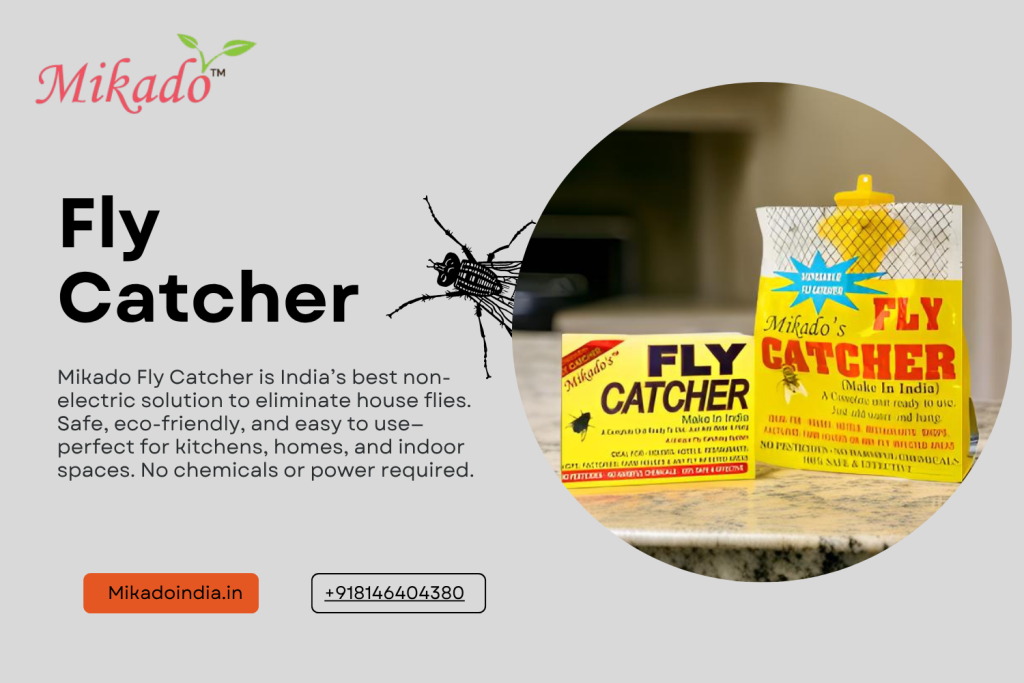
Best Fly Catcher for Kitchen & Home – No Electricity Needed
You’re in the right place if you’re tired of swatting at pesky flies or dealing with the mess and hassle of traditional fly traps. In this comprehensive guide, we’ll explore the best fly catchers for your kitchen and home without electricity.
Flies can be more than just a nuisance – they can also carry harmful bacteria and diseases that put your family’s health at risk. That’s why it’s so important to have an effective, eco-friendly way to control fly populations around your home. Luckily, there are plenty of innovative, non-electric fly traps on the market that can help you win the battle against these unwanted pests.
In the following sections, we’ll dive into the top features to look for in a high-quality fly catcher, review some of the best options available, and provide tips on how to use them effectively. Whether you’re dealing with a fruit fly infestation in the kitchen or want to keep your patio or garden fly-free, this guide has you covered. Let’s get started!
What to Look for in a Good Fly Catcher
When shopping for a fly catcher for your home or kitchen, there are several key factors to consider to ensure you get the best product for your needs:
Attractant
The most effective non-electric fly catcher uses a combination of visual and olfactory cues to lure flies in. Look for traps that feature bright colors, patterns, or lights to visually attract flies, as well as natural bait scents like fruit, vinegar, or pheromones to draw them in with the promise of a food source.
Capture Mechanism
The capture mechanism is what actually traps the flies once they’ve been attracted to the device. Some common methods include sticky surfaces, one-way entry points, or drowning in a liquid solution. Make sure the trap you choose has a reliable and humane capture system that will effectively contain the flies.
Capacity
Consider the size of the area you need to cover and how many flies you’re dealing with. Larger traps with higher capacity can handle bigger infestations, while smaller options may be better suited for more contained spaces like a kitchen counter or windowsill.
Ease of Use
Look for fly catchers that are simple to set up, bait, and empty. Features like removable collection containers, refillable bait compartments, and clear viewing windows can make the process quick and hassle-free.
Durability
Fly catchers need to withstand frequent use, spills, and potentially rough handling. Choose a model made from sturdy, high-quality materials that can stand up to regular cleaning and long-term use.
Eco-Friendly Design
Many people prefer fly traps that use natural, non-toxic ingredients and don’t require batteries or electricity. This makes them a more sustainable and environmentally-friendly pest control option.
Versatility
Some fly catchers are designed for specific use cases, like indoor kitchens or outdoor patios. Consider getting a model that can be used in multiple locations around your home for maximum flexibility.
With these key criteria in mind, let’s take a look at some of the best non-electric fly catchers on the market.
How to Use Fly Catchers Effectively
Now that you’ve learned about some of the best non-electric fly catchers on the market, let’s discuss how to use them effectively to get the best results:
Placement
The location of your fly trap is crucial. Place it in areas where you’ve noticed the most fly activity, such as near trash cans, pet food bowls, or around fruit and produce. Make sure to keep it away from direct sunlight, which can dry out bait and reduce its effectiveness.
Bait and Attractants
Follow the manufacturer’s instructions for properly baiting and maintaining your fly trap. Many models use natural attractants like fruit, vinegar, or pheromones to lure in flies. Regularly replenish the bait to keep the trap working at its best.
Cleaning and Emptying
Regularly clean and empty your fly trap to maintain its effectiveness. Dispose of trapped flies properly, and give the trap a thorough cleaning with soap and water to remove any built-up residue or debris.
Complementary Strategies
While fly traps can be highly effective on their own, you may want to combine them with other pest control methods for even better results. This could include sealing up entry points, eliminating food sources, and using natural repellents around your home.
Patience and Persistence
Dealing with a fly infestation takes time and consistency. Be patient and persistent in using your fly trap – it may take a few weeks or even months to fully eliminate the problem, depending on the severity. Stick with it, and you’ll start to see a noticeable difference.
Flies can be a persistent and frustrating pest, but with the right non-electric fly catchers, you can take control of the situation and keep your home and kitchen fly-free. By looking for traps with effective attractants, reliable capture mechanisms, and easy-to-use designs, you can find the perfect solution for your needs.
Whether you’re dealing with fruit flies in the kitchen or want to keep your outdoor spaces clear of buzzing pests, the fly catchers we’ve highlighted in this guide are all excellent, eco-friendly options worth considering. With a little bit of strategic placement and consistent maintenance, you can say goodbye to those pesky flies for good.




